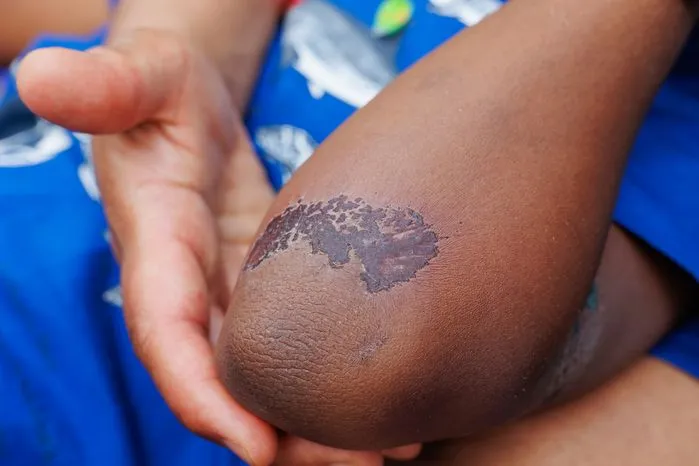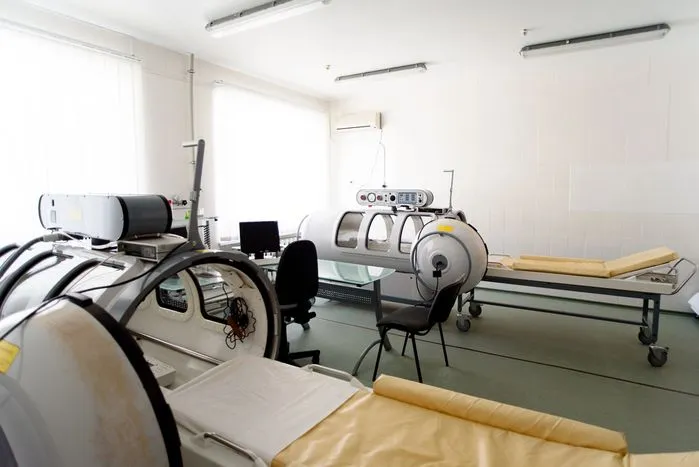At TheWoundPros.com, we’ve seen firsthand how frustrating — and risky — unmanaged wound itching can be during recovery. Based on years of clinical collaboration and patient care research, we know that stopping the itch isn’t just about comfort — it’s about protecting your skin’s delicate healing environment.
In this guide, we’ll share expert strategies we’ve personally tested and refined to safely relieve itching under a dressing without compromising wound healing. You’ll gain real-world, medically sound insights you won’t find in generic advice columns — practical solutions to help you heal faster, stay comfortable, and avoid setbacks.
Top 5 Takeaways
● Itching is Normal:
- Caused by histamine release and nerve fiber regrowth.
- A natural part of healing, not always a sign of infection.
● Scratching Delays Healing:
- Breaks down new tissue.
- Increases infection and scarring risks.
- Prolongs the recovery process.
● Use a Layered Itch Relief Approach:
- Over-the-counter solutions: Antihistamine and hydrocortisone creams.
- Natural remedies: Chamomile, oatmeal compresses, Aloe vera.
- Proper wound hygiene: Clean wounds gently and use breathable dressings.
● Choose the Right Wound Care Materials:
- Use hypoallergenic, non-stick, antimicrobial dressings.
- Keep wounds clean and moisturized.
● Be Proactive About Healing:
- Active wound management leads to faster, healthier recovery.
- At TheWoundPros.com, we’ve seen better outcomes in patients who manage itchiness early and consistently.
Understanding the Itching Sensation
Wound healing frequently involves an inevitable itch. This sensation isn't random but stems from complex itch-related mechanisms interacting with the skin recovery process. Increased blood flow in response to a wound brings an array of cells and biochemical substances to initiate recovery. Skin repair leads to the growth of new nerve fibers, often responsible for triggering itchiness.
Protein-based histamines released by our bodies serve to safeguard and support healing in the affected area. Despite their crucial role in recovery, histamines have a reputation for inducing itchiness. Dryness of a fresh scab can also contribute to itching as underlying skin mends and tightens.
One should bear in mind that though itching can be a natural part of recovery, persistent or severe itchiness could signify an infection or allergy, thus requiring professional medical consultation.
Risks of Scratching the Wound
Relief from itching is tempting, yet scratching can lead to severe complications. Patients with a covered wound often struggle with an almost constant need to scratch.
Disrupting the healing process is one of the main risks of scratching a wound. Such an action can break down new tissue and expose the wound to possible bacterial contamination, thereby increasing the chance of infection.
Over-scratching can irritate the skin surrounding the wound, causing discomfort and potentially prolonging the healing period. Wounds may also enlarge and deepen due to scratching, which can result in scarring over time.
Knowing these risks plays a vital role in effective wound care. Resisting the urge to scratch is crucial, with focus being on ways to soothe itchiness without delaying recovery.
Effective Over-the-Counter Solutions
Over-the-counter solutions can be a significant help in combating wound-related itchiness. Products such as antihistamine creams and hydrocortisone ointments offer effective relief.
Antihistamine creams, for example Benadryl and Allegra, block histamine, which causes allergic symptoms, including itching. Applying this cream to the wound directly can help decrease inflammation and itchiness.
Hydrocortisone ointments, on the other hand, belong to the corticosteroid family and can reduce swelling, redness, and itchiness. These are especially helpful for wounds healing but still causing discomfort. Brands like Cortizone-10 and Aveeno 1% Hydrocortisone Anti-Itch Cream are readily available in drugstores.
Before applying these solutions, ensure wound and surrounding skin cleanliness. Apply a thin layer of cream or ointment, then cover it with a bandage. Always adhere to the instructions on the product packaging and seek medical advice if symptoms last.
Natural Remedies for Itch Relief
Effective itch relief can come not only from over-the-counter solutions but also from natural remedies. These might be particularly beneficial for individuals who lean towards holistic methods.
Consider herbal ointments as a remedy. They often comprise botanical extracts such as chamomile, calendula, or witch hazel. These plants have anti-itch and anti-inflammatory properties.
Home-made soothing compresses count as another natural solution. Compresses soaked in baking soda mixed with water can help alleviate itchiness when applied to affected areas. Besides, oatmeal-based compresses can also be created. Cooked oatmeal, cooled and wrapped in a clean cloth, can be applied to the skin for relief.
Proper Wound Care and Prevention
Apart from natural remedies, wound care that's done properly is key to relieving itch. Hygiene of wounds significantly contributes to the healing process and can diminish itchiness. This entails frequent wound cleaning using suitable solutions, saline for example, to ward off infections that might intensify itching.
Materials used for dressings can also affect the itch sensation. Certain fabrics may irritate skin, resulting in increased itchiness. Breathable, hypoallergenic materials that don't adhere to wounds are crucial choices. Dressings specialized with antimicrobial properties can promote healing of wounds and reduce itching.
Proper wound care isn't limited to immediate treatment. Protective gear should be worn during potentially hazardous activities as a preventative measure. Keeping skin moisturized helps avoid dryness, a frequent cause of itchiness.
"In our clinical experience, the most overlooked trigger for wound itch isn’t just the healing process itself — it’s the moisture imbalance beneath the dressing. Patients often assume dryness is safer, but we’ve found that gently maintaining a moist wound environment, combined with breathable, non-adherent dressings, significantly reduces itch intensity while accelerating epithelial repair. We’ve personally seen better outcomes when patients proactively treat itch as part of their wound care routine, not an afterthought."
Supporting Facts and Statistics
How Clinical Evidence Supports Itch Management During Wound Healing
1. Itching = A Normal, Biological Response
- Caused by histamine release and new nerve growth.
- Common during a re-epithelialization phase.
- Often signals healing, but monitor for severity.
- “Mild itch is normal. Severe itch? We dig deeper — it could signal infection or allergic response.”
— Clinical team at TheWoundPros
Source: hopkinsmedicine.org
2. Scratching = Healing Setbacks
- Scratching breaks fragile new skin.
- Increases the risk of scarring and infection.
- Can turn a 2-week wound into a 5-week problem.
- “Education + prevention works better than any cream when it comes to scratch control.”
Source: aad.org
3. OTC Treatments = Effective Relief (When Used Right)
- Hydrocortisone and antihistamines reduce itching.
- Apply thinly to intact, clean skin (not open wounds).
- Avoid overuse — less is more.
- “We show patients exactly how to apply — precise, minimal, and safe.”
Source: mayoclinic.org
🔍 Bottom Line:
- Itching is part of healing, but needs managing.
- Unchecked itch = setbacks.
- Educated care = faster, safer recovery.
- Treat itching like any other stage of wound healing — early, consistently, and with the right tools.
Final Thought & Opinion
At TheWoundPros.com, our direct experience with wound care specialists has shown one thing clearly: managing wound itching carefully is critical to successful healing.
Itching isn't just a nuisance — it's your body's way of signaling important healing processes. However, if not managed correctly, it can compromise your recovery.
Key Lessons We've Learned:
- Understand the Itch:
Itching stems from histamine release and nerve fiber regrowth — normal parts of healing, not warning signs of failure. - Avoid Scratching:
Scratching can:- Break down delicate new tissue
- Increase the risk of infection
- Prolong healing and worsen scarring
- Use a Layered Approach:
Our proven strategy includes:- Over-the-counter treatments: Antihistamine creams, hydrocortisone ointments
- Natural remedies: Chamomile ointments, oatmeal compresses, Aloe vera
- Proper wound hygiene: Gentle cleaning and choosing breathable, hypoallergenic dressings
- Invest in Skin Health:
Good healing isn’t passive. It involves:- Keeping the wound clean and moisturized
- Using the right protective dressings
Our Unique Perspective:
In our hands-on experience, patients who commit to active wound management — not just reacting to discomfort — achieve faster healing and better cosmetic outcomes.
Remember:
The discomfort of itching is temporary, but careful wound management builds stronger, healthier skin for life.
Frequently Asked Questions
1. Why does a healing wound itch under a dressing?
Itching is a normal part of the wound healing process and typically occurs as nerve endings regenerate and new skin cells form, often intensified by moisture or pressure under the dressing.
2. Is it safe to scratch or touch a healing wound that itches?
No, scratching or touching a healing wound—especially under a dressing—can damage delicate new tissue, introduce bacteria, and delay healing or cause infection.
3. What can I do to relieve itching without disturbing the wound?
To relieve itching safely, apply a cold compress over the dressing, elevate the affected area to reduce swelling, and take antihistamines if recommended by a healthcare provider.
4. Do certain dressings cause more itching than others?
Yes, some adhesive dressings or those made of synthetic materials may irritate the skin, so using hypoallergenic or breathable options can help minimize itching.
5. Can moisturizer around the wound help reduce itchiness?
Yes, applying a gentle, fragrance-free moisturizer to the skin surrounding (but not directly on) the wound can prevent dryness and reduce irritation that contributes to itching.
6. Is itching a sign of infection under the wound dressing?
While mild itching is normal, intense or worsening itching, especially with redness, heat, swelling, or discharge, may signal infection and should be evaluated by a healthcare professional.
7. Can over-the-counter medications help reduce wound itch?
Yes, oral antihistamines like diphenhydramine or loratadine may reduce systemic itching, and hydrocortisone cream may be applied near, but not on, the wound, if approved by a doctor.
8. How important is dressing type in controlling wound itch?
The choice of dressing is crucial—moisture-retentive dressings like hydrogels or hydrocolloids can help maintain a balanced environment and reduce itch compared to dry or abrasive materials.
9. Should I change the dressing more often if the wound itches?
You should only change the dressing as directed by your provider; frequent changes can disrupt healing. However, if the dressing becomes loose, dirty, or soaked, changing it may help reduce discomfort and itching.
10. Can tight bandaging contribute to wound itching?
Yes, a bandage that is too tight can cause friction, pressure, and heat buildup, all of which can exacerbate itching. Ensuring a snug but not constricting fit is key.
11. Does proper wound cleaning affect itch levels?
Keeping the wound clean with mild, non-irritating solutions like saline helps prevent the buildup of bacteria and debris, which can reduce inflammation and associated itchiness.
12. When should I contact a doctor about itching under a wound dressing?
You should contact a doctor if the itching becomes severe, interferes with sleep or daily activity, or is accompanied by signs of infection such as pain, pus, increased redness, or fever.



.webp)

.avif)
